Vincent van Gogh - Head of a Peasant Woman with White Cap 1885
 |
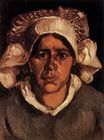 |
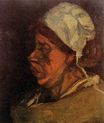 |
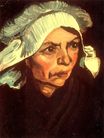 |
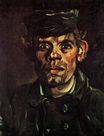 |
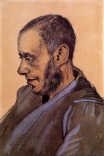 |
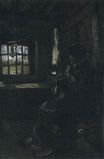 |

Head of a Peasant Woman with White Cap 1885
41x31cm oil/canvas
Zurich, Foundation E.G. Bührle
<< Previous G a l l e r y Next >>
From Foundation E.G. Bührle, Zurich:
Van Goghs central theme during his two years at Nuenen is not landscape; he wants to be a
painter of peasant life. Though he was prevented from sharing everything with the very poor in the Borinage, he wants at least to champion in paint the peasants and
weavers whom he paints and draws in their simple cottages at their daily tasks or accompanies into the fields in order to record the work of digging, sowing and
harvesting. He feels related to the Barbizon masters and seeks to carry on the ideas pioneered by Jean-Francois Millet. Thus in his work at Nuenen he is the precursor
of Gerhart Hauptmanns weavers (1893) and the graphic art of Käthe Kollwitz.
This race of Brabant peasants and weavers is not beautiful; heavy toil in all seasons has put its mark on them. Van Gogh never tires of painting them in their murky huts,
especially in winter when they are glad to earn models fees (the money being supplied by Theo). More than forty such studies are done; van Gogh thinks that one or another
of them, "even if they are now worthless", will later on have their value. The colour of these peasants heads van Gogh once compared with that "of a dusty unpeeled potato",
this reminds him of what was said of Millets peasants: His peasants seem to have been painted with the earth on which they cast the seed".